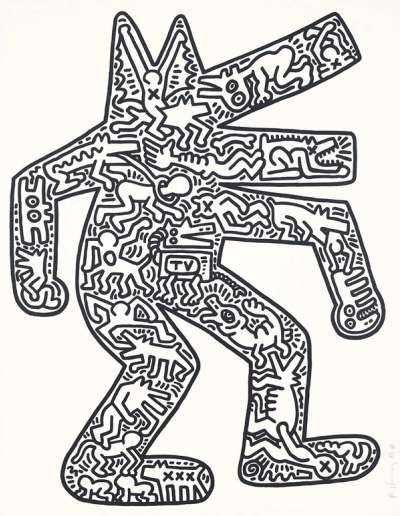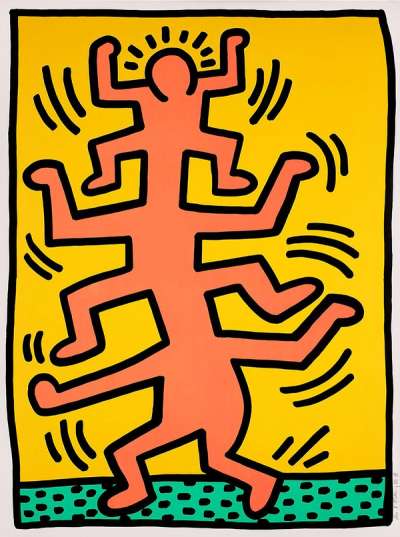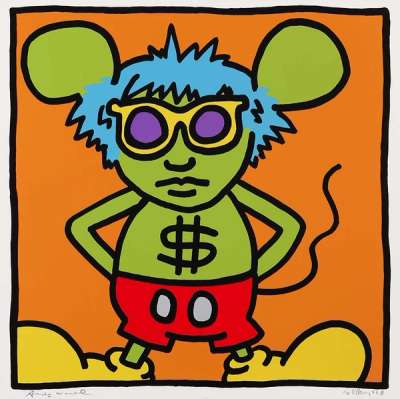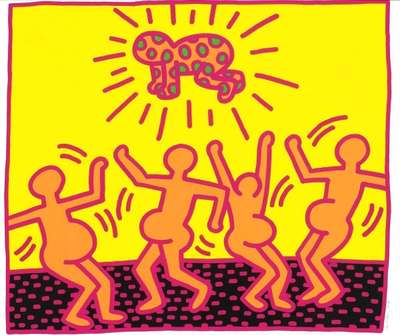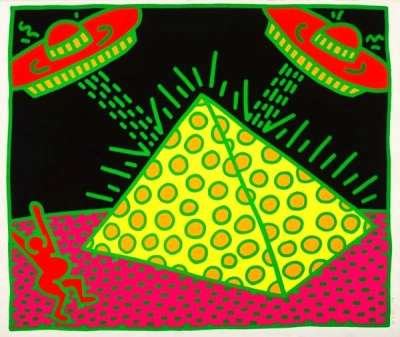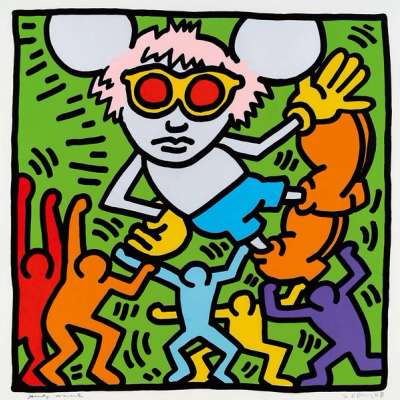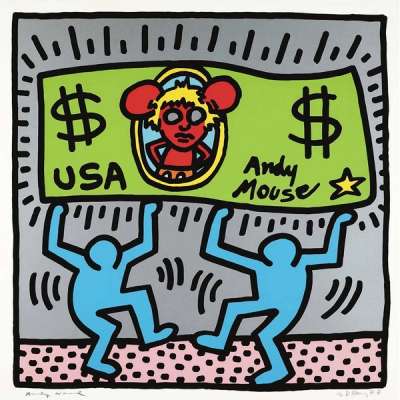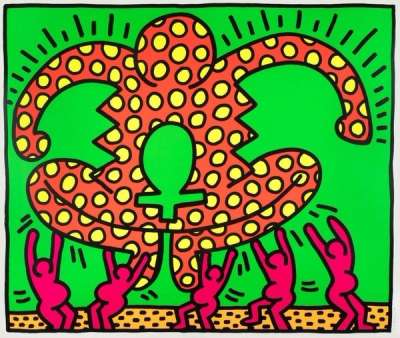Keith Haring’s Subway Drawings and Their Print Market Legacy

 “Keith in the subway” (CC BY-NC 2.0) Ken Lig (JUST SHOOT IT! Photography)
“Keith in the subway” (CC BY-NC 2.0) Ken Lig (JUST SHOOT IT! Photography)
Keith Haring
249 works
Now that a collection of 31 Keith Haring “Subway Drawings” are coming up to auction at Sotheby’s on November 21, in New York, the big question is how will their sale affect his large and diverse print market?
The Significance of Haring's Subway Drawings
The importance of Haring’s art in general - and the Subway Drawings in particular - was his ability to take cartooning and turn it into fine art. In addition, many art historians and critics consider the Subway Drawings to be Keith Haring’s purest form of expression and the bedrock on which his entire oeuvre is based.
Much has been written about collectors, and other art aficionados, and the moral dilemma they faced in deciding whether to remove a Subway Drawing or leave it alone. The conundrum centered around the knowledge that the work of art had a very limited “shelf life.” On average, Haring’s Subway Drawings remained in place anywhere from two days to two weeks. Haring’s audience was aware that his Subway Drawings would either be destroyed by vandalism or covered over with an advertisement. Many saw themselves as “rescuing” these works of art.
Others recognized their monetary potential. While Haring’s preference was for his Subway Drawings not to enter the marketplace, he ultimately wasn’t concerned with the disposition of these works, preferring to let nature (and the art market) take its course.
The Scope & Survival of Subway Drawings
It is worth noting that Haring was quoted as saying that he could complete a Subway Drawing in “two to three minutes” and that he created “thousands” of them. The book, Radiant: The Life and Line of Keith Haring, by Brad Gooch, states on page 150: “He often finished thirty or forty in a three-hour shift.”
The vast majority of the Subway Drawings were done between 1980-1985. However, the exact number produced during this period is unknown. In the article, Keith Haring: The Last Interview, Keith was asked by Jason Rubell, “How many drawings do you think you did? Maybe 10,000?” Haring’s response was: “No probably more like 5,000. Which doesn’t sound like that many, but it is.”
No one has been able to determine how may Subway Drawings survived. The most credible estimate that we have heard is approximately five to ten percent. This translates into roughly 250 to 500 drawings that remain in circulation.
The Role of the Keith Haring Foundation
It should be noted that the Keith Haring Foundation’s Authentication Board, which closed in 2012, refused to authenticate the artist’s Subway Drawings. Their reason was that Haring did not want them to become commodified. Keith Haring clearly created his Subway Drawings as bona fide works of art, to be enjoyed by the thousands of people who took the New York subway each day. For the artist, it was all about connecting with this audience.
Larry Warsh's Collection at Sotheby's
The reason why Sotheby’s agreed to auction a collection of 31 Subway Drawings is because they belong to the New York collector Larry Warsh. There’s a well-known book titled, Keith Haring 31 Subway Drawings, that documented his collection. Given Mr. Warsh’s status in the art world, and the high quality of the drawings, Sotheby’s agreed to sell the group and even gave him a guarantee.
The Impact on Haring's Print Market
Assuming these drawings do well, there’s a strong chance that it will create even more interest in the artist’s most affordable works; his prints. As always, the recommendation is to stretch a little and buy the best prints that you can afford. In the long run, the top material always goes up the most in value exponentially.
Key Haring Prints to Consider
When it comes to Keith Haring’s graphics, there’s a lot to be said for aiming high and buying a print from his Fertility series. The fact they were created early in his career, coupled with their large scale, Pop colors, and arresting subject matter, assure continuous demand for these works. The good news is that they were executed in editions of 100, which means opportunities to own one crop up from time to time.
I’ve always been a big fan of the Andy Mouse series. Beside their large scale and punchy colors, their subject matter comments on Keith’s friendship with Andy Warhol. While Warhol may have been more of a mentor to Jean-Michel Basquiat during the 1980s, his association with Keith was also beneficial to both artists. In this case, the Andy Mouse prints are hard to come by because of their small edition size of 30 - which makes it special when you spot one for sale.
Among some of the other prints which should appreciate nicely are: Dog (1985), Statue Of Liberty (1986), Growing (1988), Untitled (1989), Best Buddies (1989), and Totem (1989). All of the above capture the essence of Keith Haring and his “art is for everyone” philosophy.
A Turning Point for Haring's Market?
In truth, buying art based on anticipation of a related auction event can be risky business. Up until now, the Keith Haring market has lagged far behind that of his friend and colleague Jean-Michel Basquiat. The reason why is complex. What it probably comes down to is the mystique that Basquiat developed in his posthumous life. Through a canny combination of marketing, impressive exhibitions, and a plethora of high-quality exhibition catalogs, the demand for “anything Basquiat” has gone through the roof. Oh, and the fact that Larry Gagosian, the most powerful art dealer in the world has heavily promoted his market, hasn’t hurt.
Suffice to say, the sale of the 31 Subway Drawings is likely to call attention to the fact that Keith Haring is undervalued. Assuming that they do as well as people anticipate, there’s a good chance that his market will start catching up to Basquiat’s. Now might not be a bad time to speculate a little on this knowledge.
Discover more about Richard Polsky Art Authentication & Fraud Prevention here.








